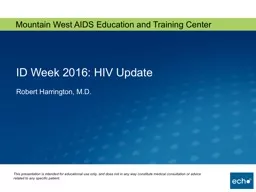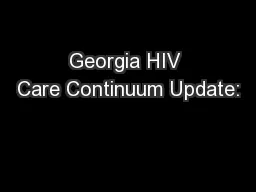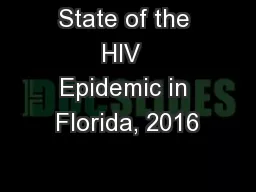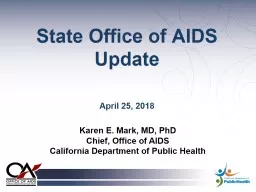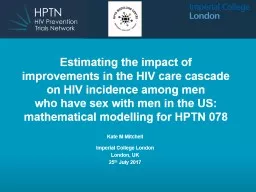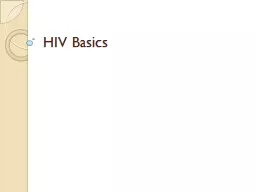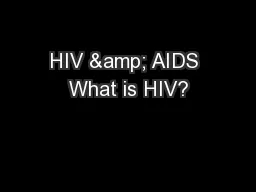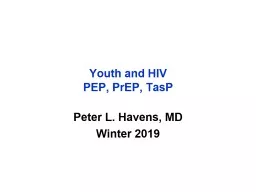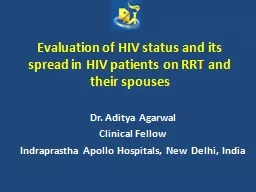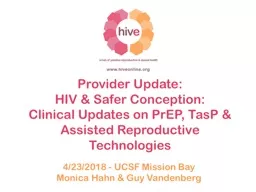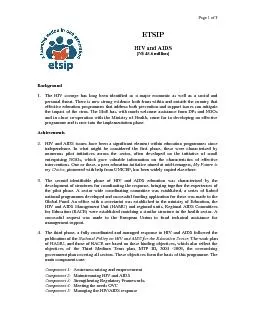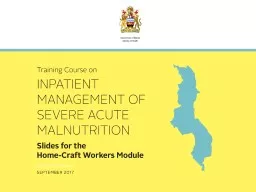PPT-ID Week 2016: HIV Update
Author : min-jolicoeur | Published Date : 2017-03-24
Robert Harrington MD ID Week 2016 HIV Update New management of lowlevel viral blips DTGABC3TC versus ATZr TDFFTC in women ARIA Omega3 fatty acids HIV reservoir
Presentation Embed Code
Download Presentation
Download Presentation The PPT/PDF document "ID Week 2016: HIV Update" is the property of its rightful owner. Permission is granted to download and print the materials on this website for personal, non-commercial use only, and to display it on your personal computer provided you do not modify the materials and that you retain all copyright notices contained in the materials. By downloading content from our website, you accept the terms of this agreement.
ID Week 2016: HIV Update: Transcript
Robert Harrington MD ID Week 2016 HIV Update New management of lowlevel viral blips DTGABC3TC versus ATZr TDFFTC in women ARIA Omega3 fatty acids HIV reservoir decay and lowlevel plasma HIV RNA. Priscilla Idele, PhD. Co-authors: . Jessica . Rodrigues, . Chewe . Luo, . Ade . Fakoya, . Chinyere Omeogu, Rene Ekpini. SESSION: . WEAD04 . Surviving and Thriving: . Children, Adolescents . and HIV. Date. Persons Living with HIV. , 2016, and Persons Diagnosed with HIV, 2015. HIV Epidemiology Section, Georgia Department of Public Health. Persons Living with HIV Care Continuum Methodology,. . Georgia. , . Medical Staff Affairs. Kosal Bo. October 24, 2016. . . Agenda. Quick Updates. Credentialing and Privileging. Provider Health Plan Enrollment. Prescription Pad Security and Management. “Busy Season” 2016 Overview. Florida Department of Health. HIV/AIDS Section. Data as of 6/30/2017. To protect, promote and improve the health of all people in Florida through integrated state, county, and community efforts. . Division of Disease Control and Health Protection. Karen E. Mark, MD, PhD. Chief, . Office . of AIDS. California Department of Public Health. April 25, 2018. Office of AIDS (OA). California Dept of Public Health (CDPH). Lead responsibility for coordinating state programs, services, and activities relating to HIV/AIDS. who have sex with men in the US: mathematical modelling for HPTN 078. Kate M Mitchell. Imperial College London. London, UK. 25. th. July 2017. Trial sites: Atlanta GA, Baltimore MD, Birmingham AL, Boston MA. Two Strains. HIV-1. HIV-2. Kills special blood cells that help fight off infections. CD4 . Virus that can lead to Acquired Immune Deficiency Syndrome. AIDS. Final stage of infection by the HIV virus. New Orleans, LA . December 15, 2015 . Laura Cheever, MD, . ScM. Associate Administrator. Department of Health and Human Services. Health Resources and Services Administration. . H. uman. . I. mmunodeficiency. . V. irus. A . virus spread through body fluids that affects specific cells of the immune system, called CD4 cells, or T . cells. A virus that kills . the body’s CD4 cells . TasP. Peter L. Havens, MD. Winter 2019. Patient Background. 16 . y.o. . female . History of depression. Prior suicide attempts. Diabetes mellitus type 2. Mild asthma. Lives in a group home. Medications. Dr. . Aditya. . Agarwal. Clinical Fellow. Indraprastha. Apollo Hospitals, New Delhi, India. Introduction. Human . immunodeficiency virus (HIV) infection has become a global . pandemic.. According to recent UN report,. Clinical Updates on . PrEP. , . TasP. & Assisted Reproductive Technologies. 4/23/2018 - UCSF Mission Bay. Monica Hahn & Guy Vandenberg. Outline. Overview of preconception health for . serodifferent. Page 2 of 8 5. These components each bring together numerous activities. They range from two large nationwide training programmes, one in prevention and the second in support, to small but no less imp Updates in the 2016 CMAM guidelines. CMAM Components. 4. Components of CMAM (1). 1) . Community Outreach. Community assessment. Community mobilisation and involvement. Community outreach workers:. Early identification and referral of children with SAM before the onset of serious complications.
Download Document
Here is the link to download the presentation.
"ID Week 2016: HIV Update"The content belongs to its owner. You may download and print it for personal use, without modification, and keep all copyright notices. By downloading, you agree to these terms.
Related Documents

